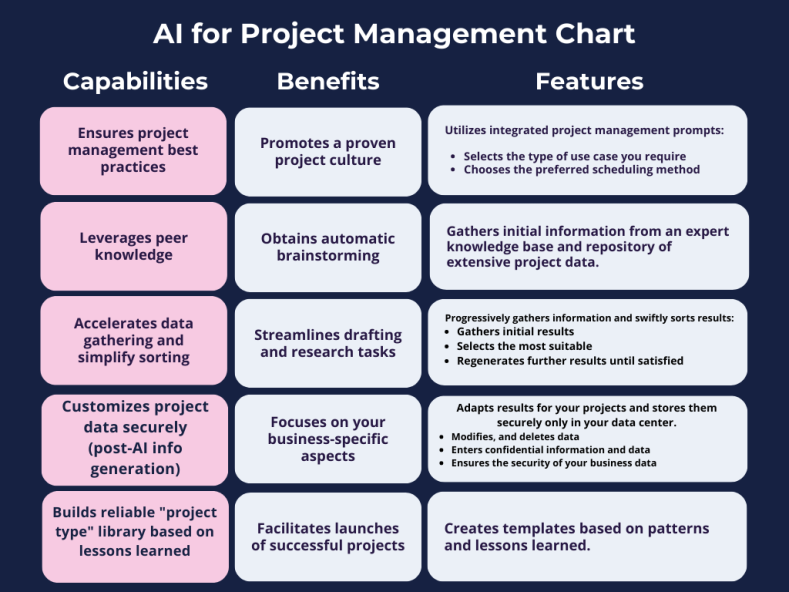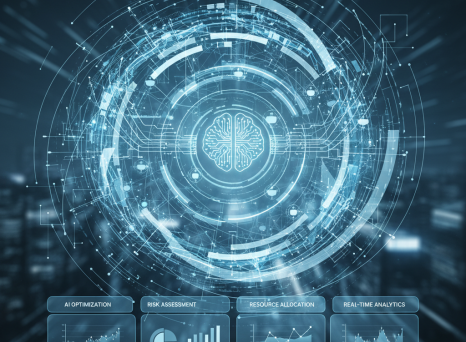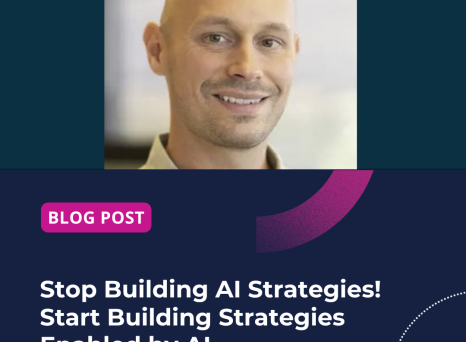If you haven't been completely cut off from the world since last November, you're probably aware of the significant advances being made with AI, particularly in a sub-field we call Natural Language Processing (NLP).
If you haven't been completely cut off from the world since last November, you're probably aware of the significant advances being made with AI, particularly in a sub-field we call Natural Language Processing (NLP). This system is not just transforming our interaction with technology and data, but also revolutionizing the way we manage our projects. This brings us to a crucial question: How exactly does NLP achieve this?
Decoding the NLP “Magic”
In short, NLP is the bridge between machines and human language. It enables machines to comprehend, analyze, and respond to our words through prompts. NLP tools, with their advanced algorithms, use the vast reservoir of online data, to extract relevant information to provide answers to countless questions we might have. It's comparable to having the collective knowledge of the world at our fingertips, well-organized and delivered for our benefit.
This is especially transformative in fields like project management. How so? Imagine having a tool that can swiftly assist in every phase of a project, from the initial brainstorming sessions to the final stages of execution. The potential for efficiency and innovation is no doubt immense. However, as with all solutions, it's essential to approach them strategically.
While AI and NLP tools can provide rapid solutions and value, they aren't infallible. The responsibility of refining, adjusting, and perfecting the results they produce rests on the shoulders of the user. Every project is unique, and while AI can offer a starting point, the final touch, the essence of “perfection”, comes from the human touch.
The Evolution of the PMO
As mentioned before, AI is reshaping various industries, and Project Management is no exception. To truly appreciate the profound impact AI can have. it’s essential to understand the traditional missions of the PMO (Project Management Office). As the principal architect of the organization's project management area, it is through its challenges and key issues that the transformation will take place.:
- Strategic Alignment: The primary function of a PMO is to ensure that projects align with and achieve strategic organizational goals. This involves prioritizing projects that offer the most value and ensuring they are executed efficiently.
- Collaboration Hub: PMOs serve as the epicenter for project stakeholders. They provide a structured environment equipped with essential resources, data, training, and tools. This ensures that all stakeholders, from project managers to strategists, have the information they need to succeed.
- Project Culture: PMOs are also responsible for fostering a project culture that's both flexible and meets organizational demands. This involves promoting best practices, continuous learning, and adaptability methods.
As we transition deeper into the digital era, the introduction of AI-driven solutions and integrations presents PMOs with a unique opportunity. PMOs can evolve into entities that are not only AI-fueled but continue to be deeply committed to the principles of digital progression and effective change management.
In essence, the future of PMOs in the AI era is not just about integrating new technologies but about reimagining their role in a world where data-driven information and automation become the norm.
This evolution promises to make PMOs more efficient, proactive, and aligned with the dynamic needs of organizations in today’s world. It’s why more and more researchers are focusing on providing the best practices on how to implement AI.
How to Implement Your AI Techniques in Your Project
Gartner, a global research and advisory firm, offers 5 steps for implementing AI within your projects:
- Identifying Use Cases: Begin by pinpointing AI use cases that are relevant to your sector and operations. Evaluate each for viability and potential ROI. Create a tangible, swift-to-achieve portfolio of these use-cases.
- Skill Acquisition: Assemble a diverse team comprising AI specialists, IT professionals, and Subject Matter Experts (SMEs) who understand business nuances. Invest in training programs to ensure your team is equipped with the latest AI knowledge and skills.
- Data Dynamics: Data is the lifeblood of AI. While you don't need to start with vast datasets, the quality of the data is essential. Begin with a focused, high-quality dataset and expand as your AI capabilities grow.
- Technological Alignment: Choose AI techniques and tools that align with your identified use cases. Consider the existing tech ecosystem, including IT infrastructure, software, and processes. Ensure that the new AI tools can integrate seamlessly.
- Championing Change: Organizational change management is crucial when introducing AI. Recognize and address cultural gaps and invest in AI education and training. Establish an AI Center of Excellence to stay updated with AI advancements and to ensure alignment with business needs.
AI's Benefits and Impact on the PMO
Now let’s Imagine a tool specifically designed for project management, powered by the capabilities of NLP. Such a tool, when integrated with a Project Portfolio Management (PPM) solution, could redefine the way a PMO operates. Here are some potential benefits:
- Unified Platform: Consolidate all project stakeholders under one organizational tool, eliminating the need for multiple external AI platforms.
- Standardized Practices: Streamline AI methodologies, set user and project-specific AI usage boundaries, and ensure consistent best practices across the organization.
- Efficient Data Management and Retrieval: Enhance the efficiency of generic information retrieval, regulate the data shared before an AI query, and ensure the security of genuine project data within the PPM tool.
- Collaborative Ecosystem: Foster a collaborative environment where information is centralized, easily accessible, and shared among stakeholders.
- Leveraging Past Projects: Use past project experiences and insights to craft templates, thereby expediting the launch and execution of future projects.

In an AI PPM solution, you should anticipate features that streamline processes, enhance collaboration, and ensure data security, all while harnessing AI. As a reminder, take a look below to see what capabilities you should consider.
Integrating AI into your projects is not just about adopting new technology and following the trends. It's about reshaping processes, fostering a culture of continuous learning, and ensuring that your organization is assured to bring the full potential of AI.
Intrigued by integrating AI into a project management solution? Discover more here.



